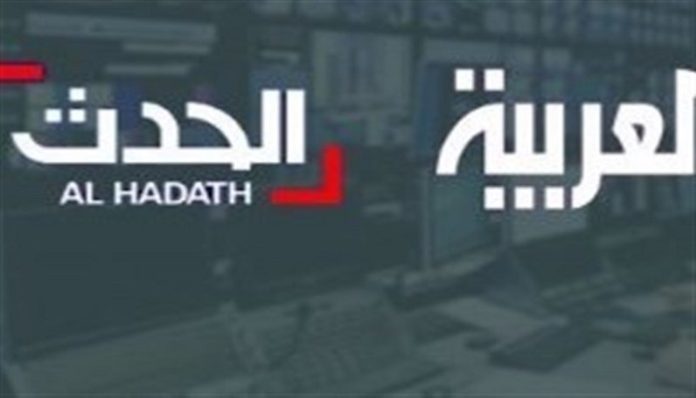The Saudi media profit is practically reversing all the developments and victories of the resistance groups in order to advance the situation in their favor, at least in the field of media and psychological warfare.
According to Pak Sahafat News Agency International Group: After the defeat of the Arab aggressor coalition in the Yemeni war, the media of some Arab countries in the Persian Gulf used a documentary about the US invasion of Iraq to accuse the Yemeni Ansarullah group of building ballistic missiles. This provoked the anger and ridicules of social media activists and tarnished the position of the Saudi media in the face of world public opinion.
The website of the International Association of Political Experts and Analysts quoted the British author Robert Enlakesh as saying: “Media organizations controlled by Riyadh and Abu Dhabi and Western companies are trying to mislead the supporters of the ‘Axis of Resistance’ and turn them against their resistance. This is the last attempt to attack the “axis of resistance” after a long unsuccessful campaign.
The Saudi coalition continued its defeats in Yemen and caused a major scandal, with a new scandal showing parts of an American film instead of Ansar al-Islam missiles in al-Hudaidah.
Yahya Sari, spokesman for the Yemeni Armed Forces, stressed that in a blatant scandal and major bankruptcy, Turki al-Maliki, a spokesman for the Saudi aggression coalition, claimed to have seen missiles in the port of al-Hudaidah, while alleged images of an American documentary had been stolen in Iraq.
The exact location of the clip in question appears to be in Baghdad, and was filmed on April 10, 2003.
However, an examination of the alleged Saudi film revealed that the alleged missile film did not belong to Yemen but to Saddam’s Iraq, and that the Saudis had cut the film from the 2009 American documentary “Severe Clear”, which deals with the events after the occupation of Iraq.
This is a 1-hour, 10-minute clip that is available to watch on YouTube. In the selected scene, American forces photographed an “ammunition depot” showing weapons left over from the forces of “Saddam”, the former dictator of Iraq.
“Yahya Sari declared that all the concerns of the aggressor coalition from the beginning were lying, fabricating facts and trying to democratize, but the liar will be exposed in the end.”
Robert Enlaksh went on to write that the resistance forces are stronger than before, despite the misinformation of the Western and Persian Gulf media.
The British author believes that as the “axis of resistance” advances against Western hegemony in the Middle East on many fronts, the media of the reactionary Arab and Western regimes are making a desperate attempt to weaken the resistance.
The British writer went on to write that the Yemeni Ansarullah movement is advancing rapidly in Ma’rib. Yemeni resistance to Saudi-backed Abd Rabbo Mansour Hadi’s forces succeeded despite deadly Saudi coalition airstrikes, but the media and Western media organizations in Saudi Arabia or the UAE seek to divert public opinion from Ansarullah’s achievements.
Read more: Analysis of the Zionist media from attack of Ansarullah on the United Arab Emirates: https://www.paksahafat.com/en/?p=18511
The author went on to emphasize that the Saudi media is experiencing its worst period.
Riyadh and Abu Dhabi are trying to achieve their goals through internal channels and the dissemination of false information. Saudi Arabia also reacted to the siege of Qatar through the media, with British social media expert Andreas Kerry saying that Saudi Arabia was covering up its internal problems by spreading rumors about Qatar.
Saudi Arabia and the UAE have repeatedly tried to present fictional scenarios and stories to create confusion, but the strategy of the besieging countries not only failed, but also increased solidarity in Qatar since 2017.
Saudi media war against the axis of resistance
The Saudi media published a series of news about the domination of Saudi-backed forces over a large part of the city of Aden, claiming that the Yemeni army and Ansar al-Islam had suffered damage, but the lies of the Saudi media were exposed by the release of documents and images by the Yemeni people in Aden.
As part of its campaign, Saudi Arabia wants to instill that it has even achieved a false victory to boost the morale of its allies, which aims to weaken the will and determination of the Yemeni people and the resistance.
Today, more than ever, public opinion has realized the power of the resistance, and they know that resistance groups are moving in the interests of the people. Thus, Saudi Arabia is trying to undermine the nation’s trust in the resistance groups through the media, and is seeking an even smaller illusory victory in this regard.
The Saudi media is presented by elite Saudi and Arab journalists, often with large budgets from the Saudi regime and using the most advanced technologies in publishing and journalism. But even if they make a significant contribution to the technological and organizational development of the Saudi media, they will never succeed in consolidating their legitimacy and serving the “interests of the media.”
Today, Saudi Arabia has lost its media war and no longer has effective media tools to defend itself. However, the huge Saudi investment in the media, aimed at improving their image in the Arab world and shaping Arab public opinion in a favorable direction, failed.


